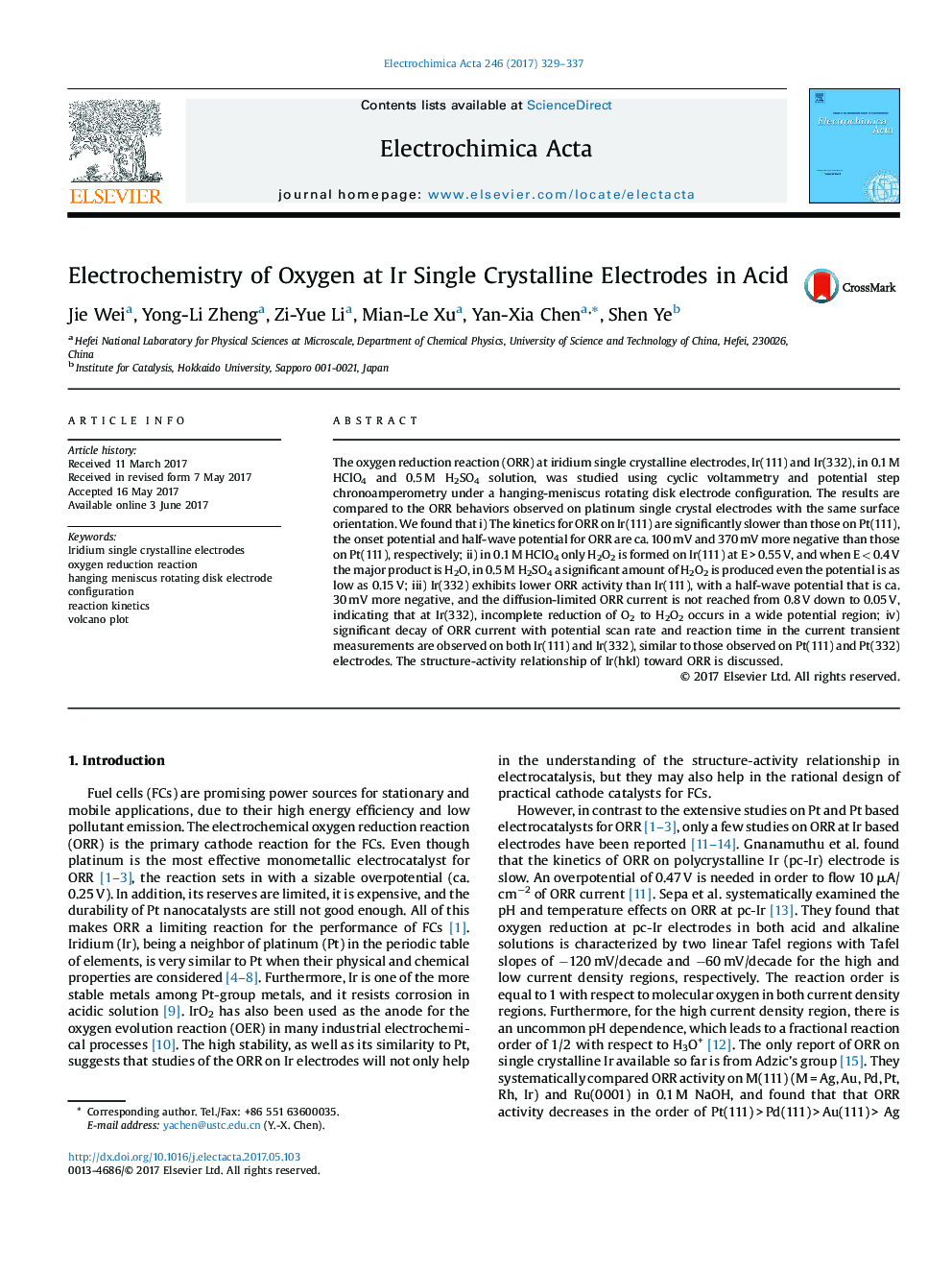| Article ID | Journal | Published Year | Pages | File Type |
|---|---|---|---|---|
| 6470466 | Electrochimica Acta | 2017 | 9 Pages |
â¢The half-wave potential of ORR on Ir(111) is ca. 0.43 V in 0.1 M HClO4, which are ca. 370 mV more negative than that on Pt(111) respectively. A significant amount of H2O2 is produced in both 0.1 M HClO4 and 0.5 M H2SO4.â¢A significant amount of H2O2 is produced from O2 on Ir(111) in both 0.1 M HClO4 and 0.5 M H2SO4;â¢Ir(332), Ir[6(111) à (111)], shows lower ORR activity than Ir(111), with half-wave potential ca. 30 mV more negative than that on Ir(111).â¢More O2 is reduced to H2O2 on Ir(332) than that on Ir(111);â¢Both Ir(111) and Ir(332) show fast decay of ORR current with scan rate and with reaction time.
The oxygen reduction reaction (ORR) at iridium single crystalline electrodes, Ir(111) and Ir(332), in 0.1Â M HClO4 and 0.5Â M H2SO4 solution, was studied using cyclic voltammetry and potential step chronoamperometry under a hanging-meniscus rotating disk electrode configuration. The results are compared to the ORR behaviors observed on platinum single crystal electrodes with the same surface orientation. We found that i) The kinetics for ORR on Ir(111) are significantly slower than those on Pt(111), the onset potential and half-wave potential for ORR are ca. 100Â mV and 370Â mV more negative than those on Pt(111), respectively; ii) in 0.1Â M HClO4 only H2O2 is formed on Ir(111) at EÂ >Â 0.55Â V, and when EÂ <Â 0.4Â V the major product is H2O, in 0.5Â M H2SO4 a significant amount of H2O2 is produced even the potential is as low as 0.15Â V; iii) Ir(332) exhibits lower ORR activity than Ir(111), with a half-wave potential that is ca. 30Â mV more negative, and the diffusion-limited ORR current is not reached from 0.8Â V down to 0.05Â V, indicating that at Ir(332), incomplete reduction of O2 to H2O2 occurs in a wide potential region; iv) significant decay of ORR current with potential scan rate and reaction time in the current transient measurements are observed on both Ir(111) and Ir(332), similar to those observed on Pt(111) and Pt(332) electrodes. The structure-activity relationship of Ir(hkl) toward ORR is discussed.
Graphical abstractDownload high-res image (166KB)Download full-size image
